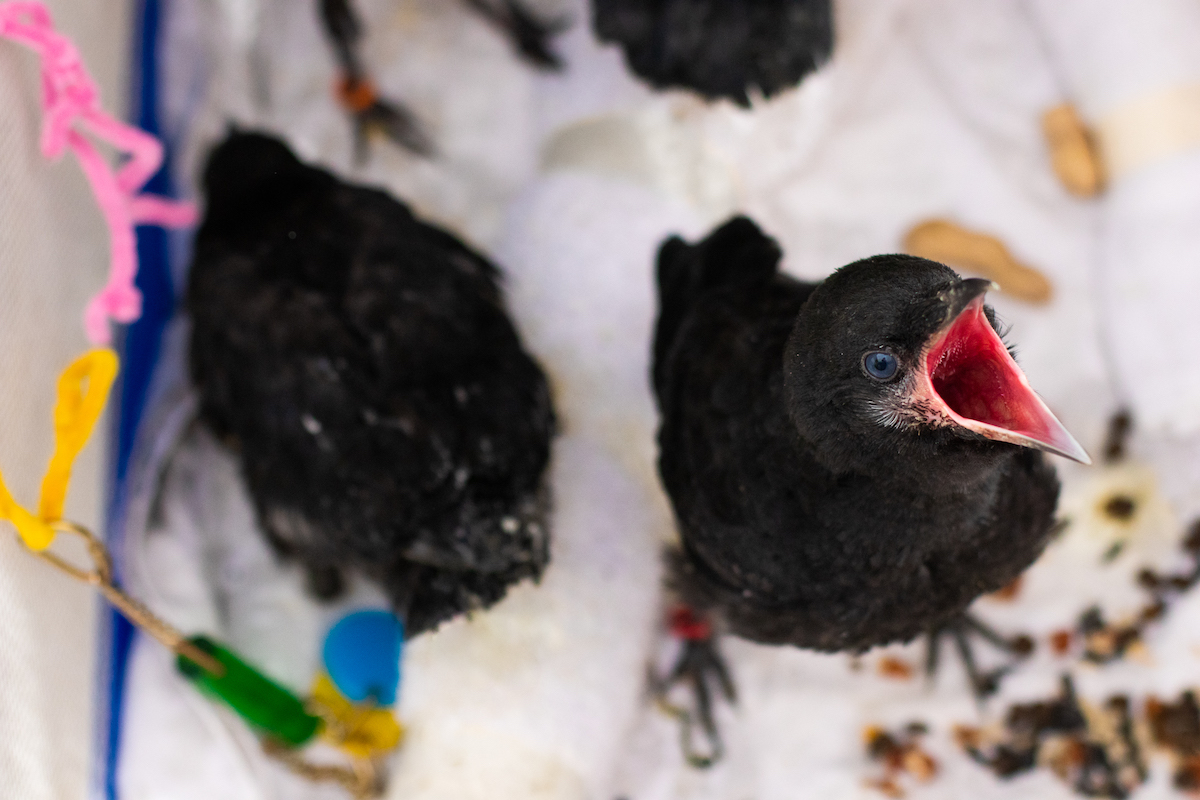Careful: That Baby Crow Might Not Need Your Help
Santa Barbara Wildlife Care Network Reports Influx of Mistaken Rescues

Crows are one of the Santa Barbara Wildlife Care Network’s (SBWCN) most frequent patients. And since the arrival of baby crow season, the center has been receiving a higher volume of fledgling and nestling crows than usual. But many of these bright-eyed birds are not in need of care, the organization says.
While appreciative of residents’ well-intentioned efforts, SBWCN explains that removing a crow from its family is detrimental to its survival. To ensure that only injured or orphaned birds are brought in for care, the center encourages the public to observe a crow before intervening.
Unbeknownst to many, young crows ― which can be distinguished by their bright blue eyes and pink mouths ― spend a lot of time on the ground before they are ready to fully fly. During this time, it is normal for them to leave the nest and hop around while they develop their strength.
The adults ― crows live in family groups, with multiple birds assisting in raising the young ― will monitor the young ones from above, bringing them food and protecting them from potential predators.
Signs that a crow is in actual need of care include witnessing the bird get injured (i.e., fall from the nest or be attacked by a predator), noticing visible signs of harm such as blood or asymmetrical wings, or seeing that the bird has no feathers and its eyes are closed, in which case the bird is too young to be out of its nest.
If you’re unsure whether a crow needs care, SBWCN encourages you to call the Wildlife Care Network Helpline at (805) 681-1080.
Support the Santa Barbara Independent through a long-term or a single contribution.



